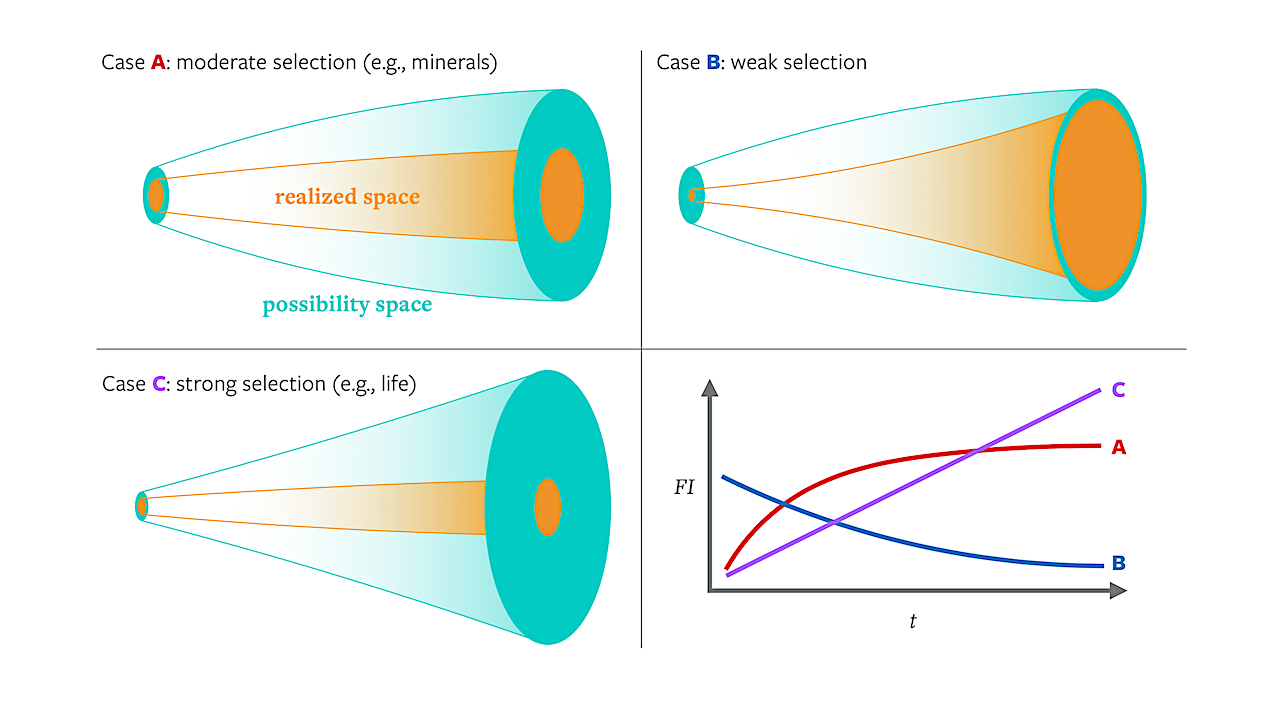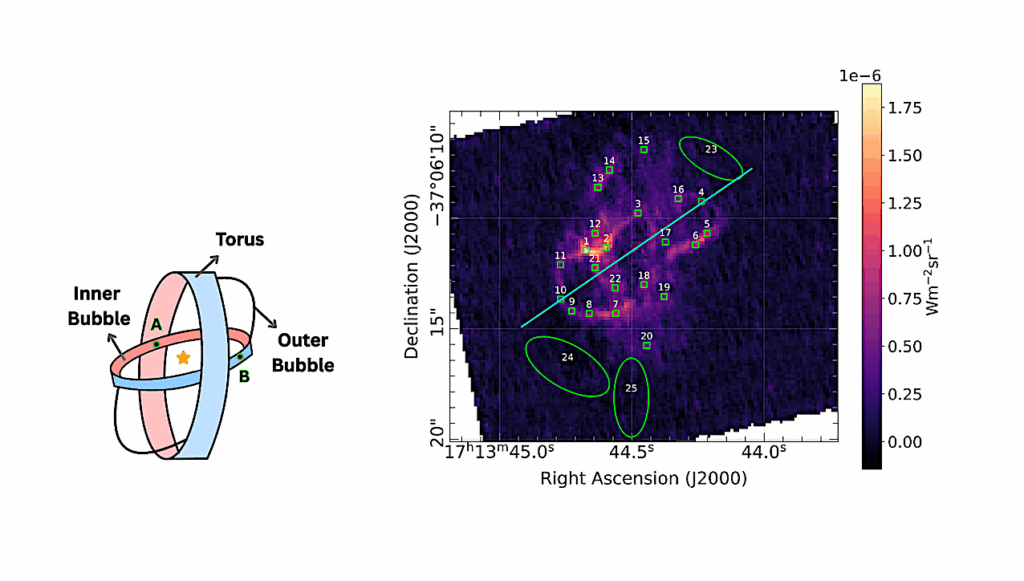Open-Ended Versus Bounded Evolution: Mineral Evolution As A Case Study

To what extent are natural evolving systems limited in their potential diversity (i.e., “bounded”) versus unrestricted (“open-ended”)? Minerals provide a quantitative model evolving system, with well documented increases in mineral diversity through multiple stages of planetary evolution over billions of years.
A recent framework that unifies behaviors of both biotic and abiotic evolving systems posits that all such systems are characterized by combinatorial richness subject to selection. In the case of minerals, combinatorial richness derives from the possible combinations of chemical elements coupled with permutations of their formulas’ coefficients.
Observed mineral species, which are selected for persistence through deep time, represent a miniscule fraction of all possible element configurations. Furthermore, this model predicts that as planetary systems evolve, stable minerals become an ever-smaller fraction of the “possibility space.” A postulate is that “functional information,” defined as the negative log2 of that fraction, must increase as a system evolves.
We have tested this hypothesis for minerals by estimating the fraction of all possible chemical formulas observed from one stage of mineral evolution to the next, based on numbers of different essential elements and the maximum chemical formula complexity at each of 9 chronological stages of mineral evolution. We find a monotonic increase in mineral functional information through these 9 stages—a result consistent with the hypothesis.
Furthermore, analysis of the chemical formulas of minerals demonstrates that modern Earth may be approaching the maximum limit of functional information for natural mineral systems—a result demonstrating that mineral evolution is not open ended.
Open-Ended versus bounded evolution: Mineral evolution as a case study, PNAS Nexus (open access)
Astrobiology, Astrogeology,








